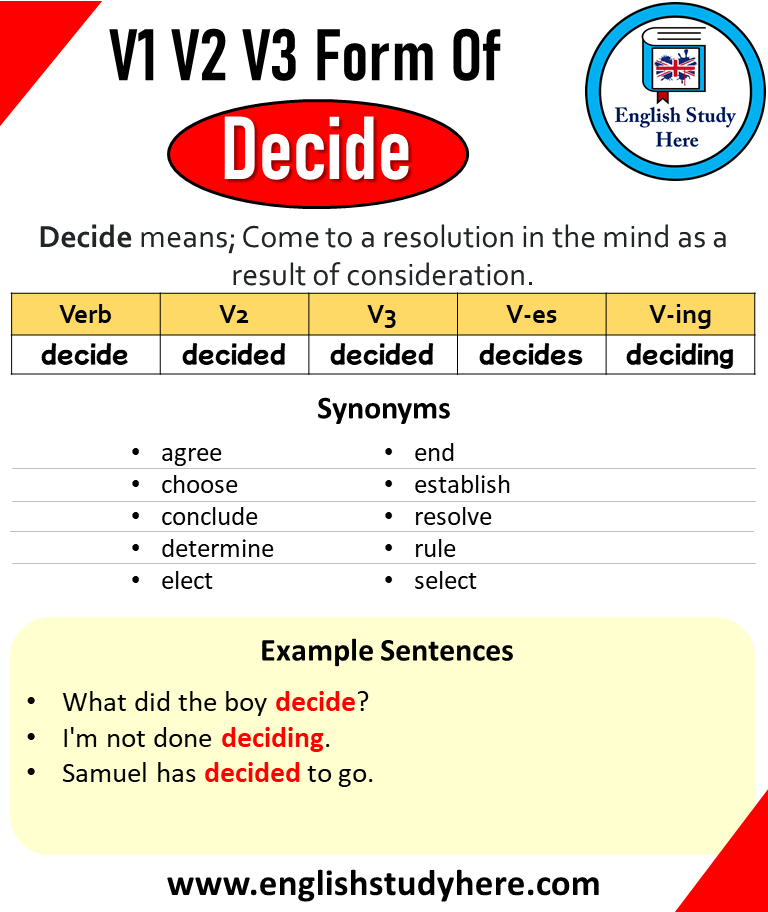Resolve Past And Past Participle Form V1 V2 V3 V4 V5 Form of Resolve
Are you often puzzled by the different forms of the verb “resolve”? You’re not alone.
Understanding verb forms is crucial for mastering any language, and English is no exception. But what if you could get a clear and simple guide that demystifies the past, past participle, and all other forms of “resolve”? Imagine how much more confident you would feel in your writing and speaking.
You’ll discover the V1, V2, V3, V4, and V5 forms of “resolve” without the usual confusion. By the end, you’ll not only have clarity but also the ability to use this verb with ease in any context. Ready to resolve any doubts you have? Let’s dive in!

Credit: englishgrammarhere.com
Base Form Of Resolve
Resolve means to find a solution to a problem. We often use it to talk about solving issues. Problems can be big or small.
The word is common in stories and real life. People use it when they need to make a decision. Choose between two things or find a middle ground.
Kids often learn to resolve disagreements with friends. This is important for getting along. Adults use resolve at work to fix issues.

Credit: englishstudyhere.com
Simple Past And Past Participle
Resolveis an action word. Its past form is resolved. We use it to show something finished. For example, “She resolved the problem yesterday.”
The past participle is also resolved. It helps talk about actions that are completed. For example, “The issue has been resolved.”
Understanding these forms is important. We use them for talking about time. They tell us when things happen. This helps make sentences clear and easy to understand.
Here are the verb forms:
| Form | Example |
|---|---|
| V1 | resolve |
| V2 | resolved |
| V3 | resolved |
| V4 | resolving |
| V5 | resolves |
Present And Future Forms
Verbs show action. Each verb has different forms. Resolveis a verb. It changes in tense. Here are the forms: V1 is resolve. V2 is resolved. V3 is resolved. V4 is resolving. V5 is resolves.
V1: I resolveto finish my homework. V2: She resolvedthe problem yesterday. V3: The issue is resolved. V4: He is resolvingthe issue now. V5: She resolvesissues easily.
Future tense uses will. Example: I will resolvethe issue soon. It shows action that will happen. Easy, right?

Credit: englishgrammarhere.com
Conclusion
Understanding the forms of “resolve” is essential for English learners. These forms help in constructing correct sentences. Knowing V1 through V5 forms boosts your grammar skills. Practice using these in daily conversations. This will enhance your language proficiency. Remember to use each form in the right context.
Your confidence in English will grow with regular practice. Keep exploring and learning new words. This will improve your communication over time. Stay patient and persistent in your language journey. Every effort counts towards better English skills.






